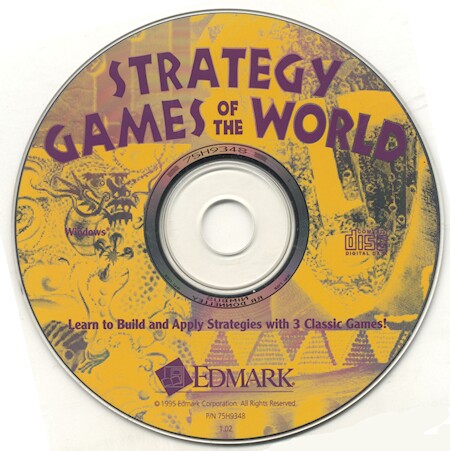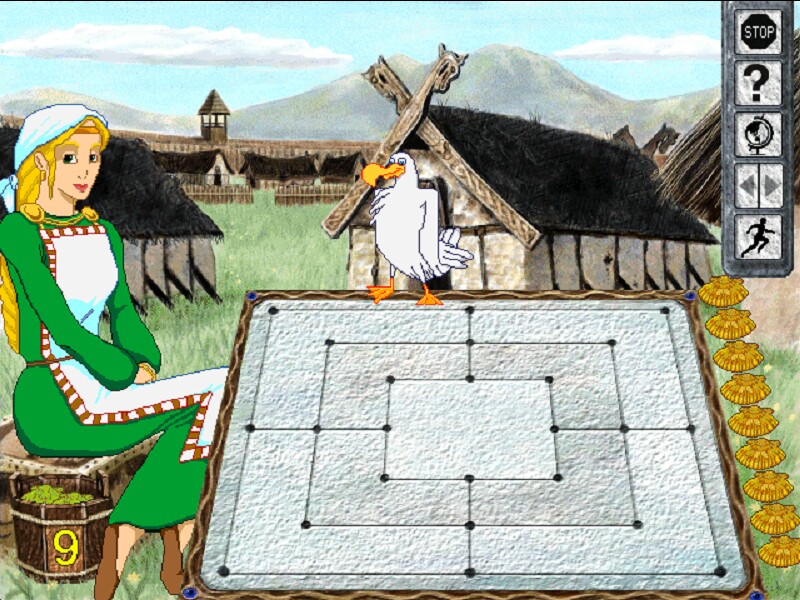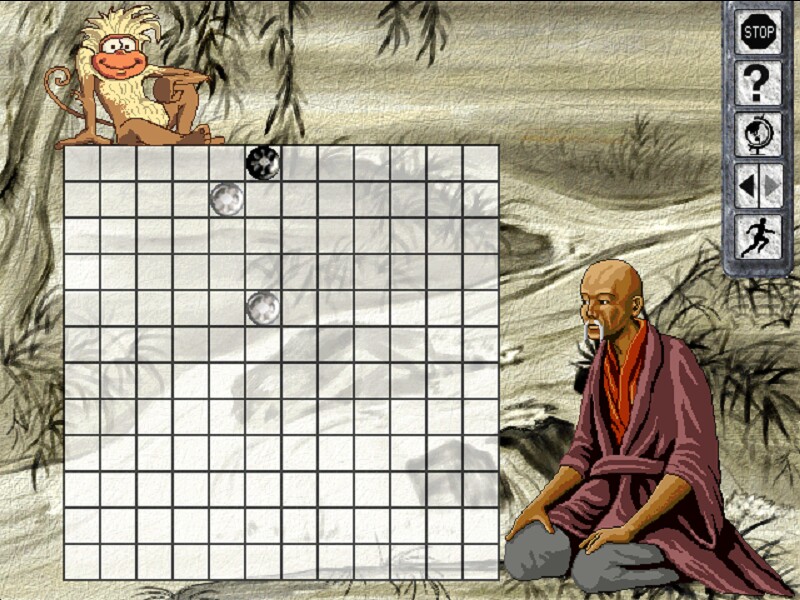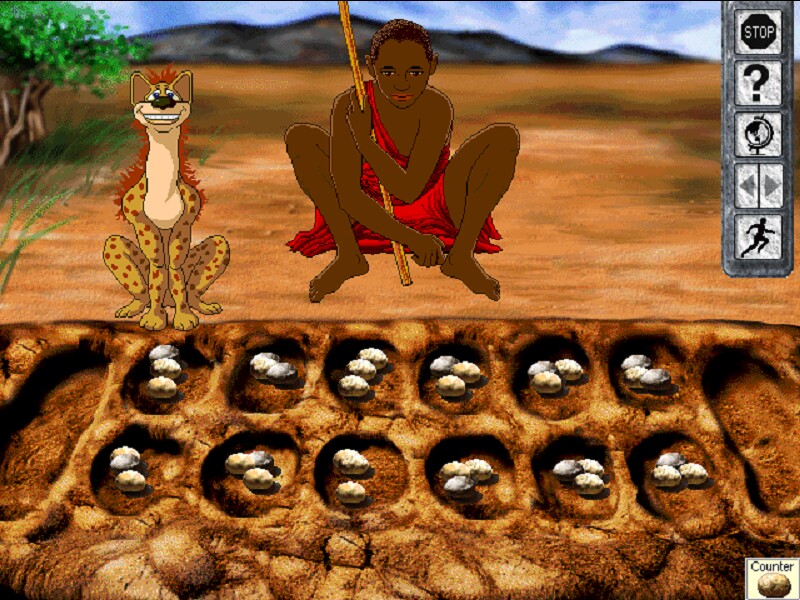
STRATEGY GAMES OF THE WORLD MANCALA GO-MOKU NINE MEN'S MORRIS +1Clk Windows 11 10 8 7 Vista XP Install

Actual Game
Strategy Games of the World
|
The Game
Strategy Games of the World consists of the strategy games from around the world: Nine Men's Morris, which originated with the Vikings and is played in many regions throughout the world, Mancala, versions of which are played in Africa, Asia, and the South Pacific, and Go-Moku, from Asia. All three are based on well-known board games. Typically, children develop their strategies for these games over time, as they play repeatedly and discuss the games with others. This program includes several features designed to help children more directly focus on and improve their game-playing strategies.
Effective strategies for these games involve skills that are important in mathematics, science, and other disciplines: planning and predicting several moves ahead, anticipating opponents' moves, reasoning about logical consequences, and keeping track of and visualizing a sometimes complex series of events ("What will the board look like if I make this move? Will I put any of my pieces in danger? Will I block my opponent's path? What is my opponent likely to do next-and then what will the board look like?"). Each game also provides experiences with additional mathematics: Nine Men¹s Morris involves graph and network theory, which play a role in many branches of computer science and engineering; Mancala involves counting, comparing, and mental computation; and Go-Moku involves finding and reasoning about two-dimensional visual patterns.
The three games have relatively simple rules and a clear goal, but nonetheless offer substantial challenge. Although children can have the computer explain the game rules, many will find it easiest to initially work with a peer or adult to learn how to play. As with many games, it's often easiest to learn by playing with someone who can elaborate on explanations if needed and answer questions.
For each game, children can choose from three different computer partners, each of whom offers a different level of challenge. Within each level, children can further adjust the difficulty of the game. Alternatively, they can match wits with a human opponent, using the computer as an on-line game board.
The "undo" and "redo" buttons, which erase (or re-instate) previous moves, are also designed to help children can improve their strategies. This feature enables children to try out alternative moves. It can be an effective learning tool for those who want to (and are ready to) analyze a game in detail, particularly if an adult is available to help them think through different options. Many children, however, will simply want to play the game, and may not be eager to take the time to stop to analyze and re-do moves.
Another strategy support feature is a series of short video clips of adults explaining how they use strategies in their professional and everyday lives. An on-screen "button" offering an opportunity to view one of these clips pops up about once in every game. Occupations of these adults vary widely. They include firefighter, sculptor, basketball coach, nurse, and glass blower.
This program has the potential to offer substantial engagement and challenge over time. As children's skills and game knowledge develop, they can return to the program again and again to play at higher levels of challenge and to explore new and more difficult variations.







